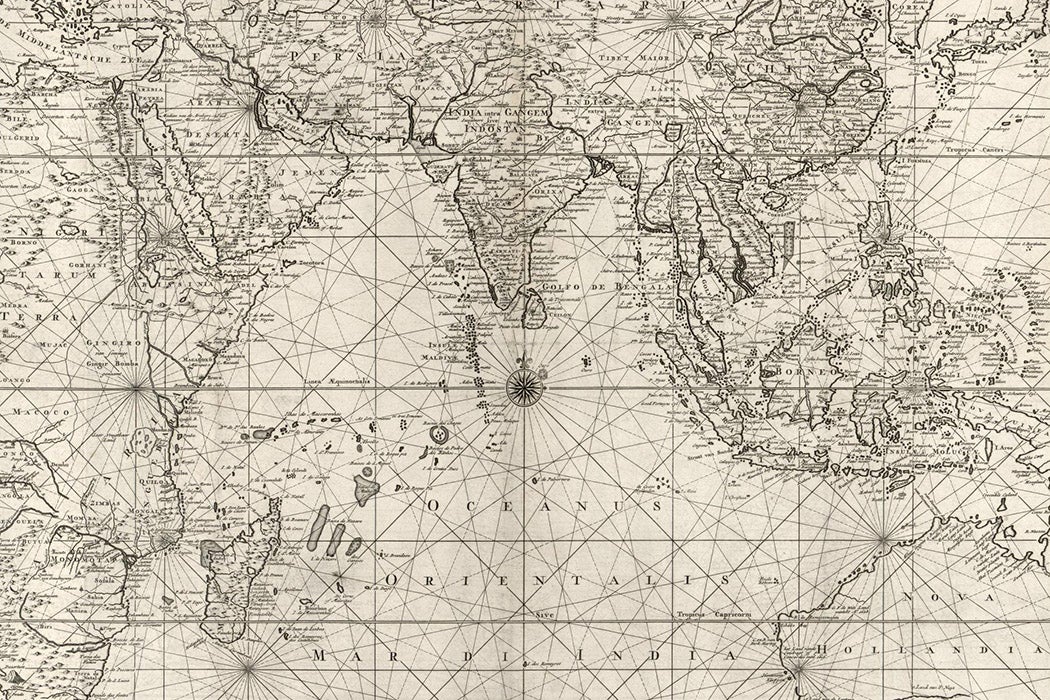We may live in a time of unprecedented culinary diversity, with food available from every corner of the world. But, as geographers Haripriya Rangan, Judith Carney, and Tim Denham write, people have been sharing food across long distances for millennia. They look specifically at the transfer of crops across the Indian Ocean region, starting as early as 2500 BCE.
Rangan, Carney, and Denham write that, going back thousands of years before that, people were already traveling across the ocean between eastern Africa, the Arabian Peninsula, South Asia, and the islands and mainland of Southeast Asia. These interactions were facilitated by monsoon winds, which blow in different directions depending on the season. Sailors used their knowledge of wind and ocean patterns to navigate to different parts of the region.
While it’s not clear exactly when and how people began traveling on the ocean, the authors suggest that rising sea levels between 6200 and 5000 BCE may have led Arabian Sea communities to develop better boats for deep-water fishing and trading.
“In doing so,” they write, “It is very likely that these maritime groups would have developed an understanding of the monsoon winds and learned to take advantage of them to sail more directly to ports along the ocean.”
Similarly, the rising seas, which created the Southeast Asian islands as we know them, may also have encouraged more sea travel and development of maritime technology in that region to maintain connections among communities now separated by deep water.
Using a combination of tools like radiocarbon dating, the study of genetic relationships among crops, and linguistics, researchers have identified likely arrivals of food plants from one part of the region to another. As far back as 2500 to 1700 BCE the Indus Valley Civilization of the Indian subcontinent appears to have received sorghum, pearl millet, and hyacinth bean from Africa. Two other African crops, cowpea and finger millet, seem to have arrived somewhat later.
The authors suggest that people from the Indian subcontinent may have imported all five of these drought-resistant crops as they adapted to a climate shift that left the area much drier than it was previously. Various local and regional cultivation systems adopted different crops at different times.
Weekly Newsletter
Centuries later, people brought domestic taro, which had been cultivated in wet forest areas in northeast India and Southeast Asia, to Africa. Based on ethno-linguistic evidence, some scholars believe that taro, along with bananas and Asian yams, arrived in West Africa around 1000 BCE. The authors suggest that this may also have represented an adaptation to a changing climate. Bantu people may have adapted to drier conditions by moving southward into the rainforest area, with the new foods facilitating this shift.
By the first millennium CE, the authors write, a visitor traveling through the ports of the Indian Ocean “would have found in the cuisines and cultivated landscapes of the hinterlands different combinations of a familiar repertoire of grain and vegetable crops representing the oceanic and continental botanical exchanges of the preceding 2000 or so years.”
Support JSTOR Daily! Join our membership program on Patreon today.







